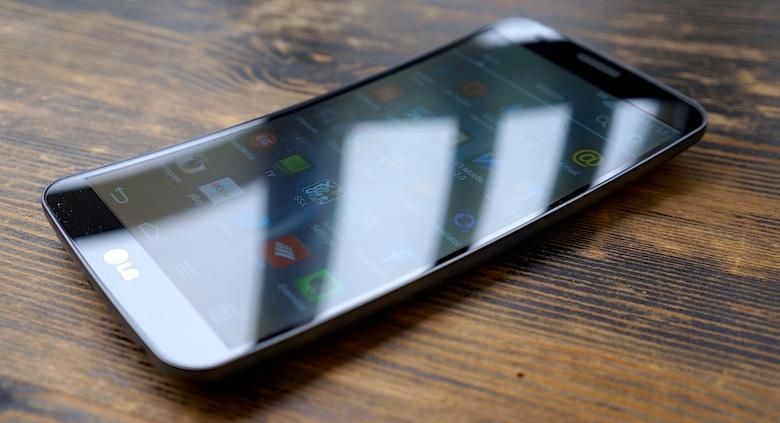Curved displays on smartphones are finally a reality, and I couldn’t be happier. The last few months have brought us not only the Samsung Galaxy Round, but the LG G Flex as well, each putting its own unique spin on the idea of smartphones built around displays made from flexible OLED substrates.
And really, my interest is less about curved phones being more practical, or ergonomically superior, and a simple matter of geeking-out: I’m going to get excited when someone’s trying something new like this, regardless of practicality or benefits.
But at least in this case, there really could be some tangible benefits – so much the better! Well, maybe not so much for the Galaxy Round, but that’s because the curvature there is a little… well, it’s weird. When the first render of the phone leaked, I couldn’t quite hold back my surprise; everything I had assumed about why a company would make a curved phone was based on it curving along the other axis – as we see with the G Flex.
Some benefits of curved screen are going to be the same regardless of the shape it takes. For instance, you can rest a phone face-down with far less a risk of any surface-level debris marring the display’s glass – you’ve only got two linear areas of contact, versus one solid plane.
But others potential benefits only make sense when we’re looking at a curve along the phone’s long edge – the shape we get from the LG G Flex. My two interests here are in how the curve might make the handset more comfortable to use for voice calls, and how it might lend itself to watching videos. For the former, I’m going to have to spend some time with the hardware myself before I can form any opinions, but I recently came across just the data I need to evaluate the latter point on its own.
We all know the G Flex is curved, but just how curved is it? How do you even express that measurement? Well, you can look at a curve as a slice of a larger circle. In the case of the G Flex, LG tells us that the circle it’s sliced from has a radius of 700 millimeters.
For you imperial kids, that’s about 27.5 inches. So, if you took a string of that length, held one end in place, and used the other end to draw out a big circle, the G Flex’s display would have the very same curvature as a section of that shape.
But what does that mean for video? Ideally, you’d want a screen that has the curvature of a section of a sphere, as projected out from your eyes to your desired viewing distance. Now, the G Flex’s display isn’t a section of sphere, but of a cylinder – it’s curved in one direction, not two – but considering we’re working with widescreen aspect ratios to begin with, the dimension that’s being curved here is the one that really matters (unlike with the Galaxy Round).
So in terms of being an ideal screen, the G Flex is optimized for viewing at a distance of 27.5 inches from your eyes. That’s good… but it’s still not perfect.
The thing is, that means that the G Flex is best viewed at (for what works out in my case, at least) to be about arm’s length – like, very nearly as far as I can possibly hold the phone away from my body. I don’t know about you, but that’s not how I normally interact my handset.
Instead, I think a more optimized curvature for this purpose would be something like a 15 inch (380mm) radius for the curve. Heck, maybe even as little as ten inches. Problem is, that would give you a phone with a much more visibly pronounced curve to it. Since we’re still talking about “curved” phones rather than fully “flexible” phones, such a degree of curve might be just too extreme for regular use – it’s only going to be that much more difficult to fit the phone in your pocket.
LG says it tried out some 300 designs before deciding on the final look for the G Flex, so I’m sure the company experimented with a whole lot of different curvatures – and this 27.5-inch radius option may not be capital-O optimal for video playback, but it’s probably part of a happy medium that tried to make the curve as useful as possible for a number of different situations – maybe even some I haven’t considered.
Right now, I’m very curious to see where curved displays go from here. Will the next model that looks like the G Flex share the same degree of curvature, or will whichever OEM delivers that model come up with a slightly different figure? I can’t wait to find out for myself, and start geeking-out over those details, as well.
–
Intrigued by the idea of curved-screen smartphones? Check out our full review of the LG G Flex.



